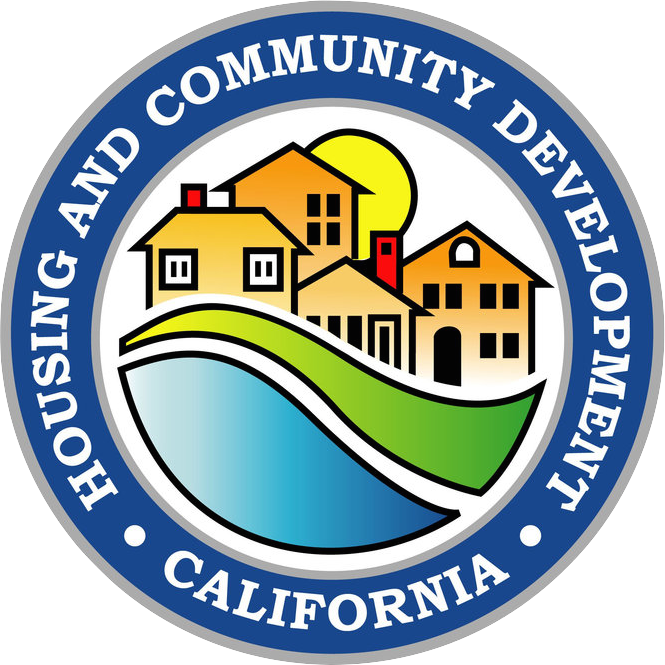Processing and Permitting Procedures
Government Code Section 65583(a) requires “An analysis of potential and actual governmental constraints upon the maintenance, improvement, or development of housing for all income levels,…including land use controls, building codes and their enforcement, site improvements, fees and other exactions required of developers, and local processing and permit procedures…”.

Processing and permit procedures can pose a considerable constraint to the production and improvement of housing. Common constraints include lengthy processing time, unclear permitting procedures, layered reviews, multiple discretionary review requirements, and costly conditions of approval. These constraints increase the final cost of housing, uncertainty in the development of the project, and overall financial risk assumed by the developer.
Requisite Analysis
- Describe and analyze the types of permits, extent of discretionary review including required approval findings, procedures, and processing time required for residential development by zoning district.
- Describe and analyze the total permit and entitlement process for a typical single-family unit, subdivision, and multifamily project. Description should include typical processes required for single-family and multifamily projects and an estimate of total typical time necessary to complete the entitlement process.
- Describe and analyze the permit requirements and process for emergency shelters, transitional housing, supportive housing, single-room occupancy units, and farmworker housing.
- Describe and analyze all permits applicable to residential development, including conditional use permits and additional mechanisms that place conditions and performance standards on development (e.g. community plan implementation zones, hillside overlay zones, environmentally sensitive areas, etc.). For example, if the jurisdiction requires a conditional use permit for multifamily housing in a multifamily zone, the element should analyze this permit procedure as a constraint.
- In the case where discretionary approval from the local legislative bodies is required for permitted uses, the element should describe how the standards of decision-making promote development certainty.
- Describe and analyze other applicable regulations and processes such as design review and planned unit development districts.
If the jurisdiction has a design review process, the element should describe and analyze review-approval procedures and decision-making criteria. The analysis could also indicate whether objective standards and guidelines exist to allow an applicant for a residential development permit to determine what is required in order to mitigate cost impacts.
The housing element should also describe the typical processing time and procedures of a residential, planned-unit development, from the “preliminary review” process to final approval by the governing board, and how development standards (e.g. setbacks and minimum lot area) and allowable densities are determined for the planned unit zone.
- If the jurisdiction has adopted an inclusionary ordinance, the housing element must provide an analysis of the ordinance. For example, the housing element should describe the types of incentives the jurisdiction has or will adopt to encourage and facilitate compliance with inclusionary requirements, options available for developers to meet affordability requirements, how the ordinance interacts with density bonus law, and the amount of any in-lieu fee (and what finding a developer must make in order to choose to pay the in-lieu fee). If the jurisdiction has established a housing fund to collect any in-lieu fees, the housing element should describe the total amount available for housing production and any planned uses for the funds.
Sample Tables
The following sample tables can help organize critical information pertaining to housing element requirements. The information provided in the tables should be tailored to the jurisdiction and followed by appropriate analysis. (Note: These sample tables are not intended to be a substitute for addressing the analytical requirements described in the statute.)
| HOUSING TYPES PERMITTED BY ZONING DISTRICT | ||||
|---|---|---|---|---|
| Residential Use | Zone | |||
| R-1* | R-2* | R-3* | Mixed-Use* | |
| Single-Family — Detached | ||||
| Single-Family — Detached | ||||
| Single-Family — Attached | ||||
| 2-4 Dwelling Units | ||||
| 5+ Dwelling Units | ||||
| Residential Care ≤ 6P | ||||
| Residential Care > 6P | ||||
| Emergency Shelter | ||||
| Single-Room Occupancy | ||||
| Manufactured Homes | ||||
| Mobile-Homes | ||||
| Transitional Housing | ||||
| Farmworker Housing | ||||
| Supportive Housing | ||||
| Farmworker Housing | ||||
| Second Units | ||||
| *Change zoning designations to match jurisdiction’s zoning ordinance as appropriate. | ||||
| TIMELINES FOR PERMIT PROCEDURES | |
|---|---|
| Type of Approval or Permit | Typical Processing Time |
| Ministerial Review | |
| Conditional Use Permit | |
| Zone Change | |
| General Plan Amendment | |
| Site Plan Review | |
| Architectural/Design Review | |
| Tract Maps | |
| Parcel Maps | |
| Initial Environmental Study | |
| Environmental Impact Report | |
| Other | |
| TYPICAL PROCESSING PROCEDURES BY PROJECT TYPE | ||||
|---|---|---|---|---|
| Single-Family Unit | Subdivision | Multifamily < 20 units | Multifamily > 20 units | |
| List Typical Approval Requirements | ||||
| Estimated Total Processing Time | ||||

